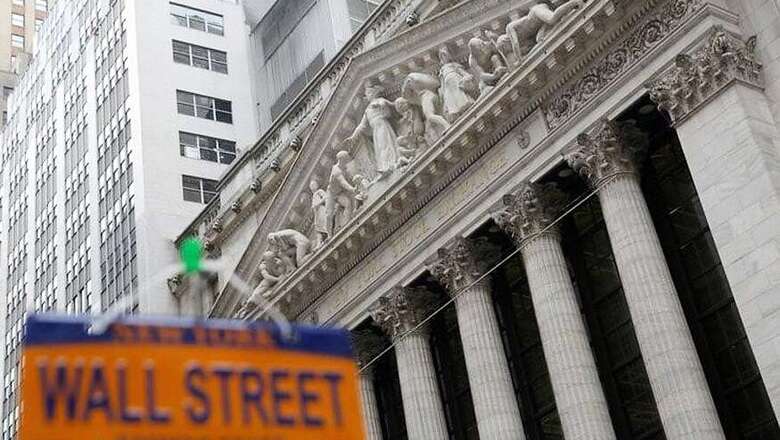
views
Singapore: US stock futures and the dollar trimmed their gains on Wednesday as US President Donald Trump promised immigration and tax reforms in a speech that contained few specifics or surprises.
Trump pledged to overhaul the immigration system, improve jobs and wages for Americans and promised "massive" tax relief to the middle class and tax cuts for companies.
US stock futures pointed to a higher open during Trump's address, although gains shrank as the speech progressed.
E-mini Dow Jones futures added 0.1 percent, after the Dow Jones Industrial Average snapped a 12-day winning streak to close down 0.1 percent in the prior session. E-mini S&P futures were 0.15 percent higher, while e-mini Nasdaq futures were fractionally higher.Also Read: Buy American, Hire American: Donald Trump in his First Speech at US Congress
The dollar index, which tracks the greenback against a basket of trade-weighted peers, narrowed earlier advances to trade 0.2 percent higher at 101.32 on Wednesday.
The US currency rebounded to trade 0.3 percent higher at 113.05 yen, after earlier erasing its gains.
Reaction in Asian stock markets to Trump's speech was largely muted, with the MSCI's broadest index of Asia-Pacific shares outside Japan down about 0.2 percent.
The index had already narrowed its morning losses after official data showed the Chinese manufacturing sector expanded faster than expected in February.
Chinese stocks advanced 0.4 percent.Also Read: Donald Trump Promises New Immigration System Based on Merit, Tax Reforms
Earlier in the session, the dollar and Treasury yields jumped after Federal Reserve officials jolted traders by suggesting an interest rate rise might be delivered later this month.
Japan's Nikkei jumped 0.5 percent, buoyed by a weaker yen and data showing manufacturing activity expanded in February at the fastest pace in almost three years.
Australian shares were off 0.6 percent despite stronger GDP data, though the Australian dollar strengthened 0.3 percent to $0.7678 on confirmation the economy returned to growth in the fourth quarter.
US 2-year Treasury yields were at 1.288, little changed during Trump's speech, after touching 1.304, their highest level since Dec. 15.
That came after New York Fed President William Dudley, among the most influential US central bankers, said overnight on CNN that the case for tightening monetary policy "has become a lot more compelling" since Trump's election.
John Williams, president of the San Francisco Fed, added to the hawkish message, saying he saw no need to delay a rate hike with the economy at full employment, inflation headed higher, and upside risks from potential tax cuts waiting in the wings.
Williams doesn't have a vote this year but remains influential among his colleagues.
US 10-year Treasury yields pulled back to 2.3989, after touching a session high of 2.4260 on Wednesday.
Also Read: Donald Trump Sees 'New Chapter of American Greatness' in Big Speech
Traders now see a better than 62 percent chance of a rate increase in March from the current level of 0.5 to 0.75 percent, a surge from 31 percent earlier, according to CME Group's FedWatch tool.
The sharp shift came despite disappointing US fourth-quarter gross domestic product growth, as downward revisions to business and government investment offset robust consumer spending.
"The key still remains Donald Trump’s planned policies... The market has so far remained patient with little actual details of these policies revealed," James Woods, global investment analyst at Rivkin in Sydney, wrote in a note.
"In the near-term the biggest threat to new all-time highs for equity markets is failure to provide further details on these policies."
In Asia, markets are still awaiting data on manufacturing activity for February in Indonesia and India.
Data releases later in the session include German unemployment for February, and US personal consumption expenditure, inflation and manufacturing activity.
In commodities, oil prices inched higher as supply cuts by the Organization of Petroleum Exporting Countries offset concerns about rising US crude inventories.
US crude rose 0.2 percent to $54.11 a barrel.
Global benchmark Brent jumped 1.9 percent to $56.63.
The stronger dollar weighed on gold, which slid 0.15 percent to 1,246.86 an ounce, extending Tuesday's 0.3 percent decline.

















Comments
0 comment